Linton, Cambridgeshire
Up to 1834
Linton had a workhouse from around 1724 (Hampson, 1934; Murphy, 1978). A parliamentary report of 1777 recorded parish workhouses in operation in Linton (for up to 23 inmates) and Whittlesford (40 inmates). The Guildhall on North Road in Whittlesford was used as the parish workhouse from the early 1600s, and also occasionally as a school room.
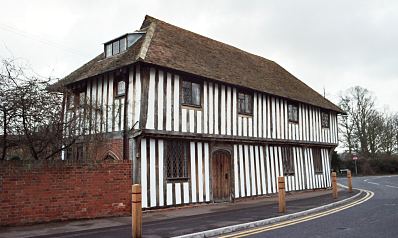
Whittlesford former parish workhouse, 2004.
© Peter Higginbotham.
After 1834
Linton Poor Law Union was officially formed on 18th June, 1835. Its operation was overseen by an elected Board of Guardians, 25 in number, representing its 22 constituent parishes as listed below (figures in brackets indicate numbers of Guardians if more than one):
County of Cambridge:
Babraham, Balsham (2), Bartlow, Carlton, Castle Camps, Duxford, Great Abington, Hildersham, Hinxton, Horseheath, Ickleton, Linton (3), Little Abington, Pampisford, Sawston, Shudy Camps, Weston Colville, West Wickham, West Wratting, Whittlesford.
County of Essex:
Hadstock, Little Bartlow.
The population falling within the Union at the 1831 census had been 11,587 ranging from Great Bartlow (population 106) to Linton (1,678). The average annual poor-rate expenditure for the period 1832-35 had been £10,547 or 18s.2d. per head.
Linton Union workhouse was built in 1836-7 on the north side of Symonds Lane in Linton. The Poor Law Commissioners authorised an expenditure of £5,878 on construction of the building which was intended to accommodate up to 230 inmates. It was designed by architects Messrs Hallet and Newman of Middlesex was a variation on the popular cruciform or "square" plan. Its location and layout are shown on the 1903 map below.
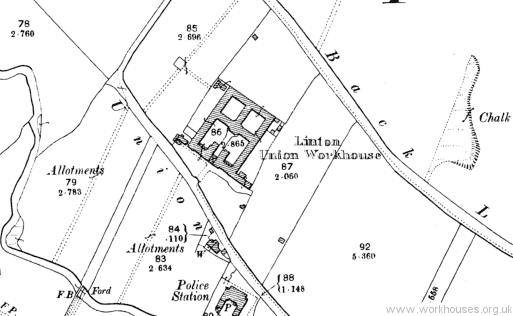
Linton workhouse site, 1903.

Linton workhouse from the south-west, c.1905.
© Peter Higginbotham.
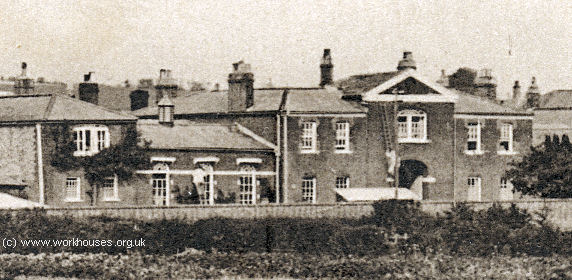
Linton workhouse from the south-west (detail), c.1905.
© Peter Higginbotham.
An entrance and administrative range faced onto Symonds Lane at the south. This block, with its central entrance archway, would have contained the Guardians' board-room, waiting room and porter's room
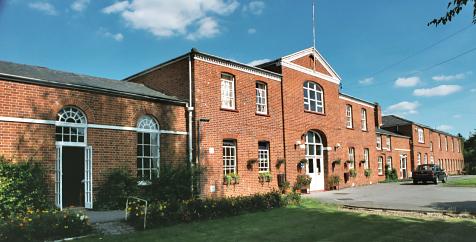
Linton entrance block from the south-west, 2001.
© Peter Higginbotham.
To the rear, a central octagonal hub would have contained the Master's quarters with windows to provide views in all directions. Ranges radiated from the hub although at Linton this was only in three directions rather than the more usual four. The eastern range appears to have contained a chapel which may also have served as a school-room.
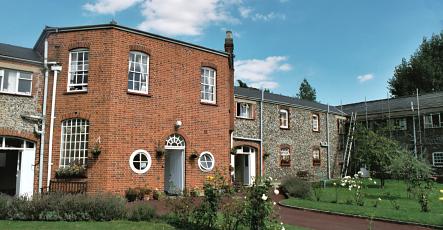
Linton central hub from the south-west, 2001.
© Peter Higginbotham.
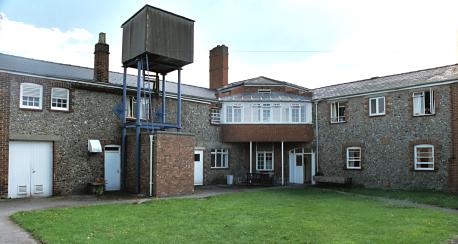
Linton north and west ranges from the north-west, 2001.
© Peter Higginbotham.
Further accommodation blocks around the outside gave a square perimeter to the buildings. Workshops and utility rooms such as a laundry and bakehouse would probably have been situated at the rear side.
The former Linton workhouse buildings are now used as an old people's home.
Staff
Inmates
Records
Note: many repositories impose a closure period of up to 100 years for records identifying individuals. Before travelling a long distance, always check that the records you want to consult will be available.
- Cambridge Archives and Local Studies, Box SH 1009, Shire Hall, Castle Hill, Cambridge CB3 0AP. Holdings include: Births (1913-32); Guardians' minutes (1835-1930); etc.
Bibliography
- Hampson, E.M. (1934) The Treatment of Poverty in Cambridgeshire, 1597-1834 (Cambridge Studies in Economic History; CUP).
- Murphy, M.J. (1978) Poverty in Cambridgeshire (Cambridge Town, Gown, and County; Oleander Press).
Links
- None.
Unless otherwise indicated, this page () is copyright Peter Higginbotham. Contents may not be reproduced without permission.


